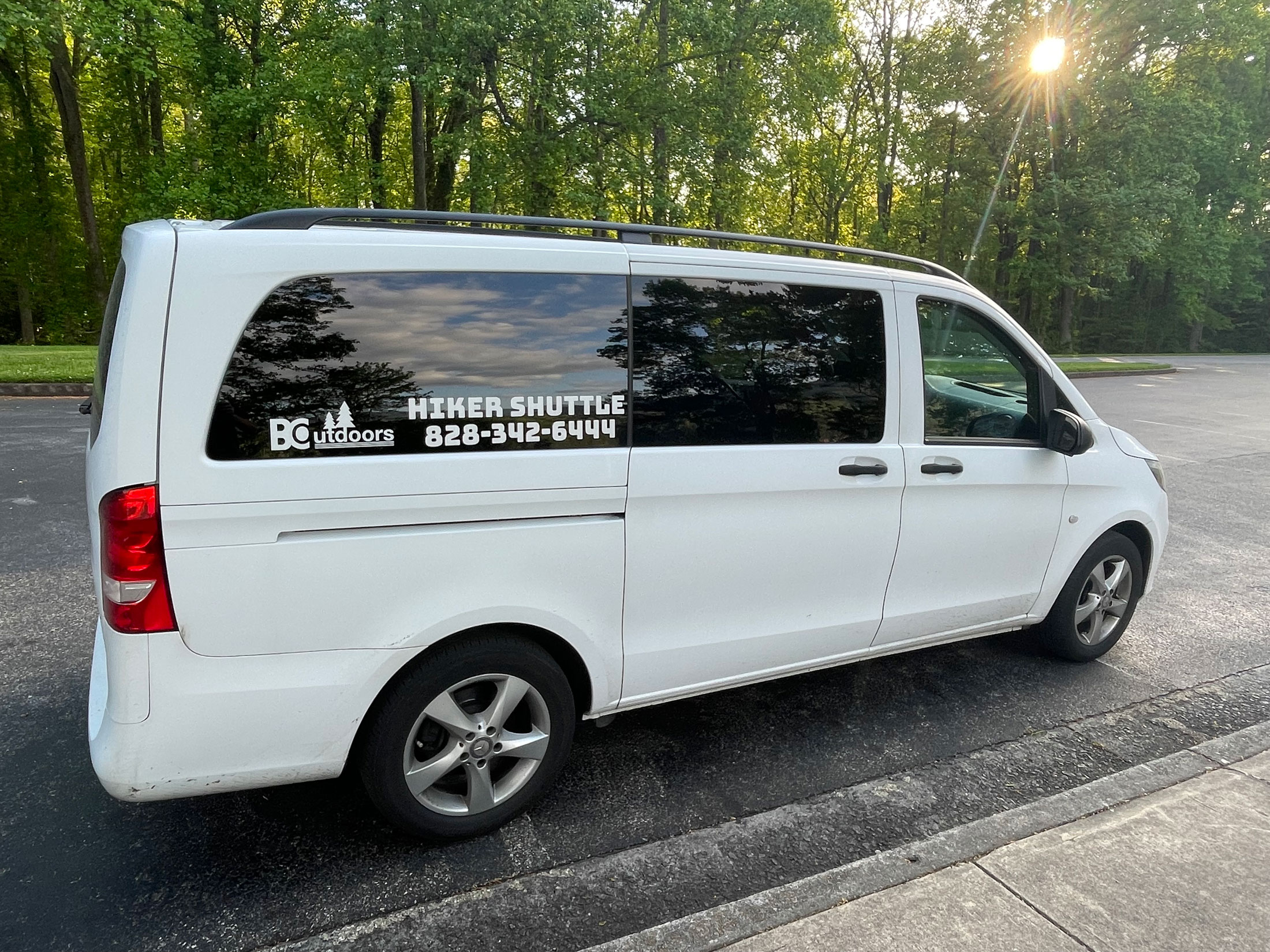
For years prior to the 2023 implementation of the Park It Forward parking tag program, visitors to Great Smoky Mountains National Park had been using the roadsides near its most popular trailheads as de facto parking lots. It wasn’t unusual to see vehicles lining both sides of the road for a mile or more when approaching the trailheads for sought-after destinations like Alum Cave or Rainbow Falls.
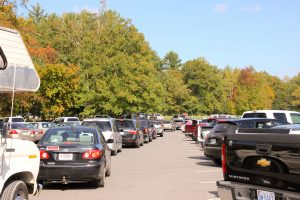
As park visitation continued to climb, however, the pitfalls of roadside parking became increasingly obvious—obstructed roadways, trampled and even denuded vegetation, and danger to pedestrians mingling with heavy traffic enroute to the trailhead. To address these issues, the park service took measures to curtail unsafe parking, installing nearly five miles’ worth of roadside protections such as boulders, fencing, and wooden bollards. But creating physical deterrents was only part of the solution. Visitors needed more options to access these trailheads, and information about alternative adventures.
“Though roadside areas were never designated parking spots, people had been using them that way for quite a while,” said Kendra Straub, the Smokies’ management and program analyst. “We knew we wanted to improve safety and access by providing another way for people to get to their destinations.”
Before implementing Park It Forward, the park service reached out to all the local companies already authorized to provide shuttle services in the Smokies and asked if they’d be interested in expanding their offerings, or in having the park incorporate their services into its messaging. In Tennessee, the companies that agreed to work with the park service include AAA Hiker Shuttle, A Walk in the Woods, Great Smoky Mountains Eco Tours, RockyTop Tours, and Smoky Mountain Rides. In North Carolina, visitors can get a ride from Bryson City Outdoors and Carolina Bound Adventures.
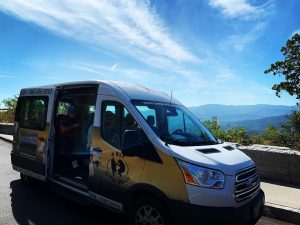
“These companies were interested in partnering because they realized that there would be a demand from a business standpoint,” Straub said. “All of them are still offering shuttle services almost a year and a half later.”
Some companies, like Gatlinburg-based A Walk in the Woods, significantly expanded their shuttle options following the partnership with the National Park Service. A Walk in the Woods has provided on-demand shuttle service for all 26 years of its existence, said co-owner Vesna Plakanis, but last year it added a regular daily route that travels between Alum Cave, Newfound Gap, Rainbow Falls, Bullhead, and Trillium Gap trailheads. These rides cost $17 each way and can be booked online. They’ve proven popular, but not yet with the demographic Plakanis initially thought they might attract.
“We thought we’d have more day hikers, and that’s not really happening,” she said. “But we are having a lot of people reach out who are staying at the lodge or the shelter at Le Conte, and we do several of them a week. We’re definitely busier this year than we were last year when we first started it. I think people are catching on to the fact that a lot of these trailheads are full by 6 a.m.”
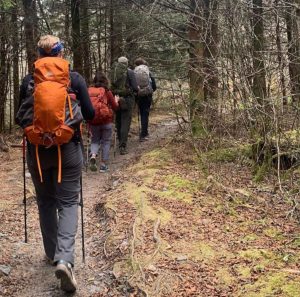
Across all shuttle companies, Straub said, Alum Cave Trail, which offers the shortest route to Mount Le Conte, is the most popular drop-off location. Plakanis expects demand for shuttle drop-off will continue to increase among both day hikers and backpackers, “especially as people are realizing parking is at a premium.”
Ben King, co-owner of Bryson City Outdoors—which has locations in Cherokee and Bryson City, North Carolina—said nearly all of his shuttle business comes from backpackers, especially Appalachian Trail hikers walking the 72 miles between Big Creek and Fontana Dam. That volume hasn’t changed much since the partnership with the park began. Though he gets a fair number of calls from prospective day hikers, they’re nearly all staying on the Tennessee side looking to hike trails closer to Gatlinburg. He typically refers them to Tennessee-based shuttle services that will be able to give them a better price.
“For those Tennessee side of the park hotspots, yes, we’ve had more calls and inquiries than in the past, but it’s hard for us to fill that need,” he said.
In 2023, three-quarters of the park’s 13.3 million visits started from entrances on the Tennessee side of the park, and most of the Smokies’ most notoriously congested trailheads—Laurel Falls, Alum Cave, Chimney Tops—are on that side. Promoting shuttle options is just one of the tools the park employs to reduce crowding.
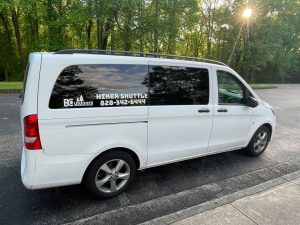
“People talk about a silver bullet, and for things like visitor experience, it’s not that,” Straub said. “It’s silver buckshot, because we have all kinds of visitors with all kinds of goals.”
The shuttles have proven an enticing option for visitors who can’t reschedule their hike or pivot to a plan B—people with a coveted reservation at LeConte Lodge, for example, or scout groups whose leaders have painstakingly planned a hike at a particular place and time. For more flexible visitors, heightened messaging informing them of tricks to avoid the crowds, such as hiking earlier in the morning, later in the afternoon, or at an alternative location, might do the trick.
A new tool launched in April can help with those calculations. Using historic traffic data and updated annually, the tool tells prospective visitors whether a particular day is likely to be crowded, moderately congested, or not busy at all. It also breaks down arrivals by hour, showing visitors which parts of the day they can expect to be the most hectic.
“It’s a simple tool, but we’re hoping it can be helpful for those who do have flexible days,” said Straub.
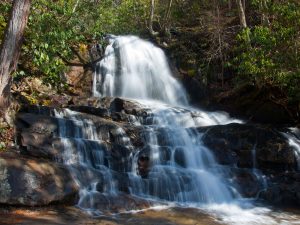
A pilot project in 2021 explored the use of timed reservations and regular shuttle routes to alleviate congestion at Laurel Falls Trail, an experiment that “went really well,” Straub said. A subsequently completed environmental assessment determined this system could be implemented permanently in the future, and the same document included a suite of other improvements at Laurel Falls, including trail widening, adding 50 new parking spots to the existing 30, and building a new viewing platform and wider bridge. An 18-month trail closure to implement these improvements is expected to start this fall.
These solutions can’t be copied and pasted to every trailhead in the park, however, and the Smokies can’t simply “build its way” out of the congestion issues it faces, Straub said. The Smokies is a “large and complicated park,” and its leadership will consider solutions on a site-by-site basis.
The situation is by no means perfect, but the park’s efforts thus far—shuttles, parking tags, roadside protections, and heightened outreach efforts—seem to be making a difference. At Laurel Falls, for example, a site for which the park has especially robust data, the falls are less crowded and litter less voluminous than in the past.
“Absolutely, there’s improvement,” Straub said.
Subscribe to get the latest posts sent to your email.
The Great Smokies Welcome Center is located on U.S. 321 in Townsend, TN, 2 miles from the west entrance to Great Smoky Mountains National Park. Visitors can get information about things to see and do in and around the national park and shop from a wide selection of books, gifts, and other Smokies merchandise. Daily, weekly, and annual parking tags for the national park are also available.